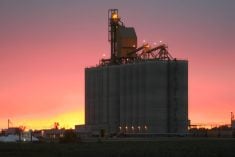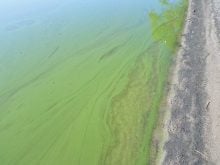If think you have Japanese brome germinating in your fields this fall, it’s likely not Japanese but downy brome, says an Alberta researcher and weed specialist. Downy brome is a fall-germinating weed, most often found and controlled in winter wheat fields, says Bill Hamman, of Hamman AG Research and a senior coach with AgriTrend, based at Lethbridge, Alta.
If you have something popping up with your spring wheat, barley or canola, it may look much like downy brome, but it is actually Japanese brome, says Hamman. It is very difficult, even for a specialist, to distinguish between the two weeds until they head out much later in the season. The main difference is that downy brome is fall germinating and Japanese brome is mostly spring germinating.
Read Also

Cancer agency reclassifies another herbicide ‘probably carcinogenic’
The WHO’s cancer research agency has now put atrazine, a herbicide well known to corn growers, in the same potential-hazard category where the agency put glyphosate.
“As we get into spring, I often hear of producers in southern and central Alberta and Saskatchewan complaining about that darn downy brome that shows up in the spring,” says Hamman. “But the fact is what they are seeing is Japanese brome.”
Pockets of Japanese brome have been identified in Western Canada since the 1990s. But with the adoption of zero till on conservation farming practices, the weed has increased its range. It is now quite commonly found in south and central Alberta and Saskatchewan and even into Manitoba.
Either weed can take a toll on yields. Research shows 100 weed plants per square metre can reduce crop yields by 40 to 50 per cent.
Downy brome is Bromus techtorum L. while Japanese brome is Bromus japonicus — same family, but different weeds, which require different timing of control measures, says Hamman.
The best strategy for control of the fall-germinating downy brome, common in winter wheat, is to apply a pre-seeding glyphosate burnoff in early fall to catch the early-germinating weeds, seed good-quality clean seed, and then follow that with a later fall in-crop treatment. The same approach is recommended for Japanese brome in the spring. A pre-seeding burnoff with glyphosate will catch the early germinating weeds before seeding.
There have been few if any herbicide options for in-crop control until the last couple of years. Simplicity (a non-residual Group 2) by Dow AgroSciences is registered for control of both downy and Japanese brome.
Optimum time for control of downy brome with Simplicity in the fall coincides with moisture conditions that support fall germination, and ideally well before the weed gets established. A spring application of Simplicity for downy brome in winter wheat, does little more than suppress the weed, especially if the weed is past the six-leaf stage.
LeeHartisafieldeditorforGrainewsin Calgary,Contacthimat403-592-1964orby emailat [email protected]















